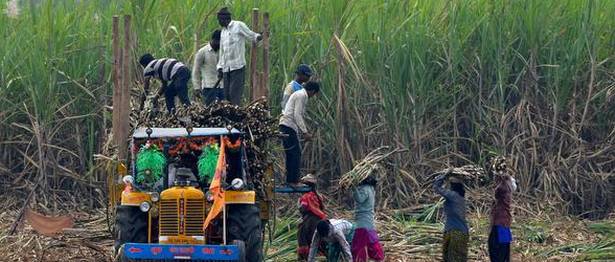 25-05-2021
25-05-2021
Disrupting a crop loan ecosystem with automation

 Insurance Alertss
Insurance AlertssDisrupting a crop loan ecosystem with automation
* With process automation & digitisation of numerous data points involved in crop loan operation, the segment is a mammoth big-data game
* There is an urgent need to adopt modern financial technology in crop loaning
* Banks need to look at crop loans as a great business opportunity and not a necessary evil thrust upon them by the government
In the absence of available data, disbursal of loans to farmers through Kisan Credit cards becomes a hectic task for banks, which results in delays and even denial of loans, at times leading to farmers borrowing on unfavourable terms from moneylenders.
Crop loans are essential for millions of farmers — especially those in the small and marginal categories. The Centre provides subvention loans of up to ₹3 lakh and, with an additional incentive for timely repayment, the effective interest rate works out to an affordable 4 per cent. Banks have been mandated to secure crop insurance cover for farmers at a negligible premium.
Despite affordable crop loans, only about 60 per cent of the farmers in the country have accessed institutional credit. Crop loan processes in banks are driven largely without any automation. Farmers, traditionally, do not have a great relationship and engagement with credit institutions and banks. The indirect cost daunts him — loss of time in collecting documentation, travelling to branches, expenses incurred on verification of land ownership documents and processing fees by banks. Farmers in desperate situations have also been taken advantage of by people posing as bank representatives or agents on many occasions.
The subsidy issue
Subsidies and waivers are another set of problems that banks have to deal with. These waivers are used as a carrot to garner votes. But these strategies cause consistent damage as they impact loan repayments and increases non-performing assets (NPAs). In 2016, waivers crossed the ₹2.4-trillion mark. In 2019, non-repayment of loans was over 11 per cent. But there is no denying that subsidised crop loans are the need of the hour for farmers.
However, there are significant issues as to who is actually eligible for a loan. Limited data to qualify a farmer for the loan and a lack of real-time engagement with farmers on crop success, challenges and risks are significant drivers for determining returns. There are several challenges to accurately and robustly predicting loan performance.
Role of data
Current farmer repayment solutions address the symptoms and not the problem — and that is poor crop performance. There are issues with all kinds of exclusions. Correct diagnosis and mitigation of these issues are possible only through authentic, credible data collection and analysis.
All banks are required to provide 8 per cent loans to smallholder and marginal farmers. With the current lack of digitisation, it is difficult to collect the data points that provide a window to these parameters and it becomes difficult to track actual progress. This calls for banks and financial institutions to shift their outlook and approach and adapt disruptive tech ideas for bank loans to work for the entire ecosystem consisting of farmers, banks and the government. This will bring about transparency and a robust loan system.
Need for simplicity, transparency
There is a need to have set criteria to offer crop loans — crop loans-based crop-wise acreage, crop seasonality, irrigation availability and methodology and several other parameters. However, there is also a need to make this process hassle-free and extremely simple and transparent. This can be achieved through digitising the process.
To create an ecosystem of healthy credit, banks need to look at crop loans as a great business opportunity and not a necessary evil thrust upon them by the government. With process automation and digitisation of numerous data points involved in crop loan operations, the segment is a mammoth big-data game.
Digitisation, the key
Manual handling of this massive data during crop loan processes results in inefficiencies, delays, biases, lack of transparency — and even exclusions. Further, in the absence of digitisation, banks, governments and other stakeholders are deprived of the power of data analytics for making informed decisions on policies, products, processes, cross-selling opportunities and so forth. Therefore, there is an urgent need to adopt modern financial technology in crop loaning.
Despite all this, there are risks associated with farming and crop loans that may manifest as vagaries of nature or pestilence causing a distress situation for banks or the farmer. Banks do not have very structured risk assessment models and, even if they have, they are, sometimes, overlooked.
Risk assessment
Just as there is KYC, there is a need to evolve specific risk assessment models and generate a credit score — (Farmer Rating Score) and just as the KYC can be updated and shared with the farmer and, with the farmer’s consent, can be available to the bank. This will bring about a fair distribution of the loan and mitigate the risks for the bank.
Digitisation can not only create transparency in the system by bringing about access to healthy credit and end dependency on waivers, thus creating a robust crop loan system, but also help banks target the farmer-centric market that can help them earn profits.
Source: The Hindu Business Line
